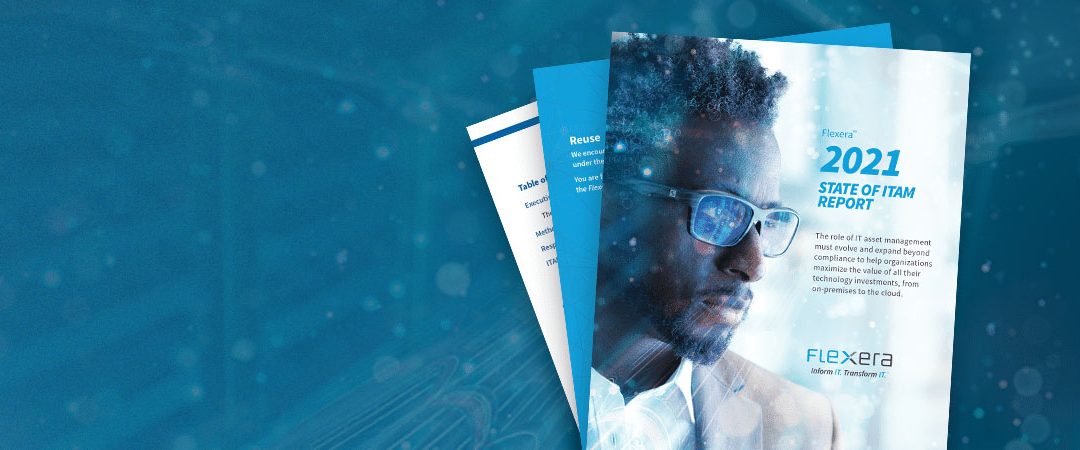Digital transformation is accelerating in organizations. The traditional roles of information technology asset management (ITAM) and software asset management (SAM) must evolve beyond compliance and audits in order to ensure each service is aligned with strategic IT initiatives across the complex hybrid IT environment. In mid-2020, Flexera conducted a survey of 461 global IT professionals who play significant roles in the ITAM and SAM processes within their organizations. The results of the survey were compiled and released in our inaugural Flexera 2021 State of ITAM Report. The report details the importance of IT asset management along with the current maturity of today’s ITAM teams and the value they’re delivering to their organizations. It also provides a view of the future of ITAM and how organizations plan to evolve to serve the needs of the digital enterprise.
Who ITAM/SAM teams report to matters
ITAM teams can often create the most impact when they’re able to interact across the full IT function and be a part of strategic initiatives. The figure below shows there is significant diversity as to where these teams report within their IT organizations. While SAM teams are small, they’re a critical element in understanding and controlling IT spend, yet only 25 percent of them report to the C-level. The reporting structure does impact organizational efforts and the measured success of the IT organization.

SAM maturity impacts software optimization
SAM processes have been defined for at least a decade, yet a quarter of organizations are still in the beginner stage of maturity.
Beginner maturity level is achieved when an organization is getting started with SAM implementation and employing an ad hoc focus primarily on discovery and audit. Intermediate maturity level is defined as when an organization has implemented ongoing tracking of software use and license positions, a precursor for being able to optimize activities. The goal for SAM teams and the most impactful level of maturity is advanced, where an organization has implemented full optimization of their software.

Maturity can affect the SAM team’s responsibilities, and while most are focused on the basics of software discovery, few are focused on the growing cloud and container environments. Even though most SAM teams are small, their responsibilities expand as organizations grow and SAM practices mature. Therefore, it’s critical for SAM leaders to prioritize advancement through the maturity stages to enable their SAM teams to fully impact their organizations’ strategic goals.
Deliver value by reducing waste: challenge or opportunity?
One of the challenges preventing organizations from controlling and minimizing wasted IT spend is decentralized ownership of the technologies (SaaS, cloud, and containers) that heavily contribute to gaps in governance and spend control. While respondents estimate an average of 25 percent wasted spend within the various areas (desktop software, data center software and SaaS), most analysts estimate it to be at least 30 percent. The probable cause of the underestimation can be attributed to SAM teams’ lack of visibility across the full spectrum of IT spend.
Flexera asked survey participants at each of the different IT asset management maturity stages to rank their challenges for spend optimization. While all stages wrestled with the same five challenges, the rank order of challenges differed depending on maturity stage. This is why it’s important for organizations to research expanding the responsibilities of their SAM teams beyond traditional compliance and audit to ensure having a scalable program that will keep up with the broader hybrid IT environment and able to impact strategic initiatives.
COVID-19 driving SAM initiatives toward cost savings
Often, the top SAM initiatives will align with cost savings. In the next 12 months, 69 percent of the organizations plan to focus on optimizing and saving on software spend.
As the impact of the COVID-19 pandemic materializes, organizations are doubling down to reduce their cost structure and create efficiency across their entire spend. With many of those savings expected to be delivered by SAM teams, organizations are increasing their focus on SAM best practices. While 15 percent say they will have a decreased focus on audit response, this will be worth watching as some analysts are predicting that software vendors may increase audits in 2021 to help reduce negative revenue impacts of the pandemic and recession.
Misalignment of SAM team success metrics to key initiatives
The top three success metrics that SAM teams focus on are compliance related, such as accurate license positions, compliance with regulatory/internal audits and compliance with vendor contracts. These seem somewhat misaligned with their stated top key initiatives being focused on cost savings and optimization.
Most organizations’ cost optimization activities translated directly into the greatest savings. These optimization activities include the reuse of existing licenses, savings resulting from vendor negotiations and reduced maintenance spend on unused software. Adjusting success metrics to reflect outcomes from these types of activities would more closely align with measuring true impact on strategic initiatives.
Misalignment of success metrics and strategic initiatives can hinder organizational success. It’s important that the success metrics of the SAM teams be directly aligned with critical goals for the organization.
Driving toward maturity and scalability
Digital transformation is an important driver for organizations looking to sharpen their ITAM/SAM focus and increase savings.
It’s also important to achieve increased maturity and implementation of best practices when transitioning SAM success metrics away from just compliance. By focusing on key initiatives such as cost savings, connecting with the CIO/CTO level, and implementing cloud teams across the IT organization, companies can ensure the impact is delivered strategically to the entire organization.
By leveraging data and focusing alignment on key initiatives, IT professionals can benchmark their own ITAM success and create both organization-wide success as well as significant cost savings.
Contact us to receive the Flexera 2021 State of ITAM Report now for more insights and details regarding the maturity and impact of ITAM/SAM teams.






